 Yamaha aerox NS50 - Owner's Manual > Handlebar switches
Yamaha aerox NS50 - Owner's Manual > Handlebar switches
Left
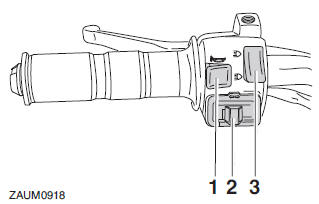
- Horn switch "
 "
" - Turn signal switch "
 "
" - Dimmer switch "
 "
"
Right
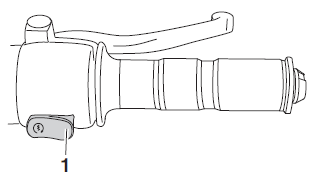
- Start switch "
 "
"
Dimmer switch " "
"
Set this switch to "  " for the
high
beam and to "
" for the
high
beam and to " " for the low beam.
" for the low beam.
Turn signal switch "  "
"
To signal a right-hand turn, push this
switch to "  ". To signal a
left-hand
turn, push this switch to "
". To signal a
left-hand
turn, push this switch to " ". When
released,
the switch returns to the center
position. To cancel the turn signal
lights, push the switch in after it has returned
to the center position.
". When
released,
the switch returns to the center
position. To cancel the turn signal
lights, push the switch in after it has returned
to the center position.
Horn switch "  "
"
Press this switch to sound the horn.
Start switch "  "
"
Push this switch while applying the front or rear brake to crank the engine with the starter.
Front brake lever
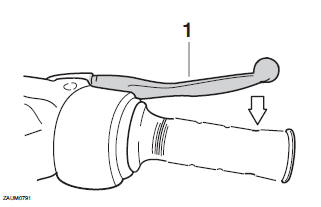
- Front brake lever
The front brake lever is located on the right side of the handlebar. To apply the front brake, pull this lever toward the throttle grip.
Rear brake lever
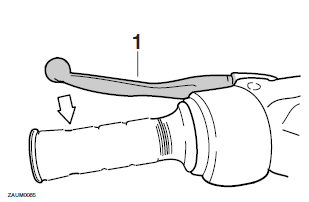
- Rear brake lever
The rear brake lever is located on the left side of the handlebar. To apply the rear brake, pull this lever toward the handlebar grip.
Fuel and 2-stroke engine oil tank caps

- Fuel tank cap
- 2-stroke engine oil tank cap
The fuel tank cap and the 2-stroke engine oil tank cap are located under the seat.
Fuel tank cap
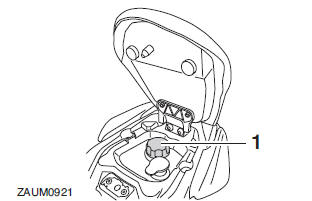
- Fuel tank cap
To remove the fuel tank cap, turn it counterclockwise, and then pull it off.
To install the fuel tank cap, turn it clockwise.
2-stroke engine oil tank cap
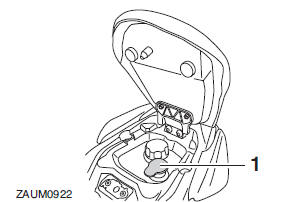
- 2-stroke engine oil tank cap
To remove the 2-stroke engine oil tank cap, pull it off.
To install the 2-stroke engine oil tank cap, push it into the oil tank opening.
WARNING
Make sure that the fuel and 2-stroke engine oil tank caps are properly installed before riding the scooter.
Leaking fuel is a fire hazard.
See also:
 Yamaha aerox NS50 - Owner's Manual > Multi-function display (NS50)
Yamaha aerox NS50 - Owner's Manual > Multi-function display (NS50)
Speedometer Clock "RESET/SELECT" button Odometer/tripmeters/fuel reserve tripmeter Fuel gauge
 Yamaha aerox NS50 - Owner's Manual > Fuel
Yamaha aerox NS50 - Owner's Manual > Fuel
Make sure there is sufficient gasoline in the tank. WARNING Gasoline and gasoline vapors are extremely flammable. To avoid fires and explosions and to reduce the risk of injury when refueling, follow these instructions.
 BMW R 1250 RT
BMW R 1250 RT Kymco Agility 50
Kymco Agility 50 Piaggio Liberty 50
Piaggio Liberty 50 Yamaha aerox NS50
Yamaha aerox NS50 Aprilia SR50R
Aprilia SR50R Kymco Agility 50
Kymco Agility 50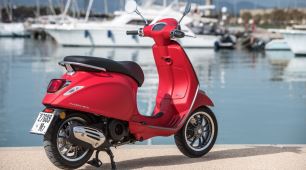 Vespa Primavera 50
Vespa Primavera 50 Peugeot Speedfight
Peugeot Speedfight